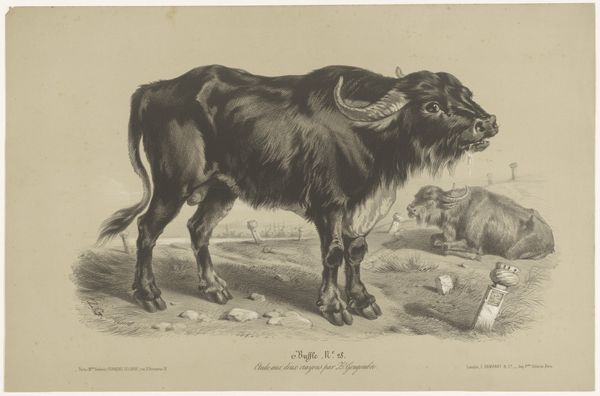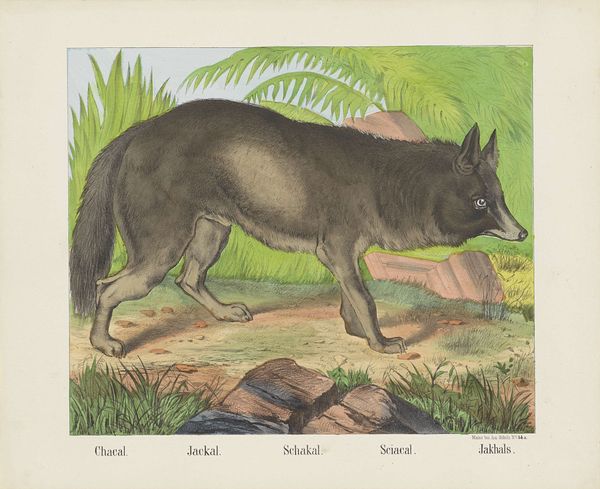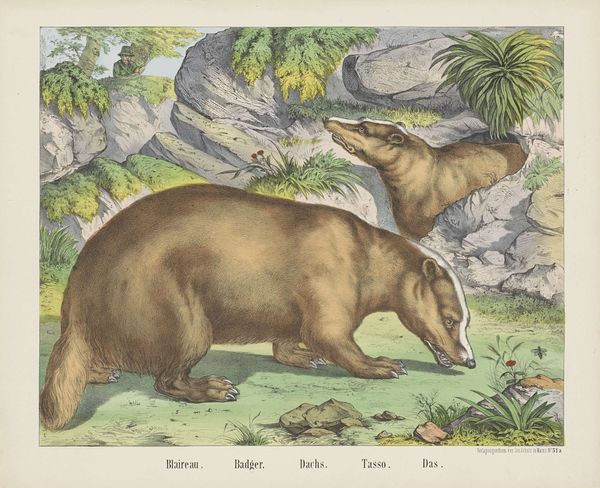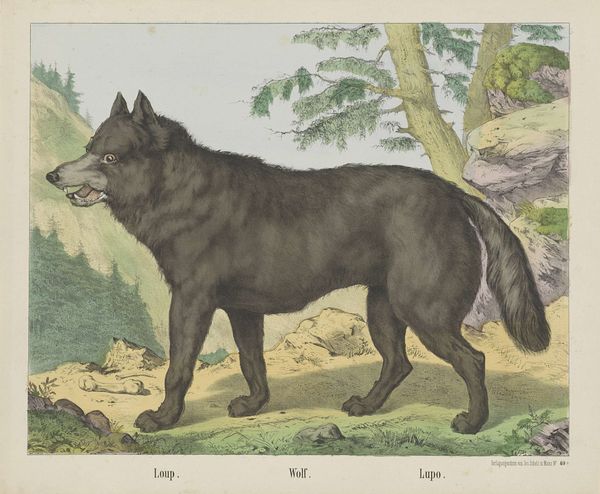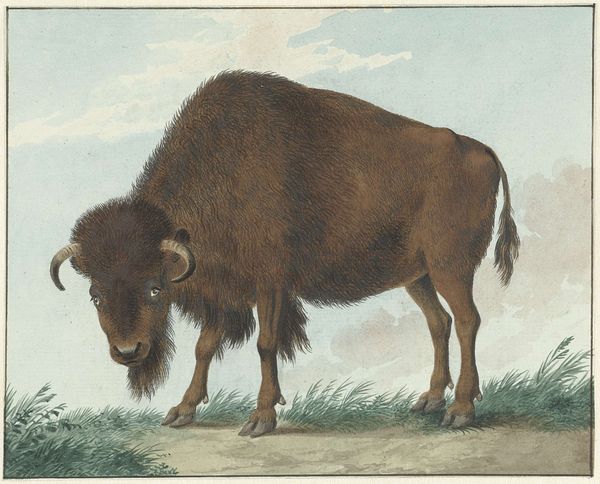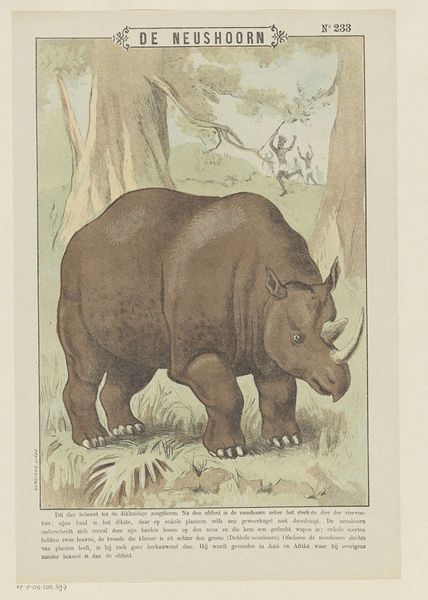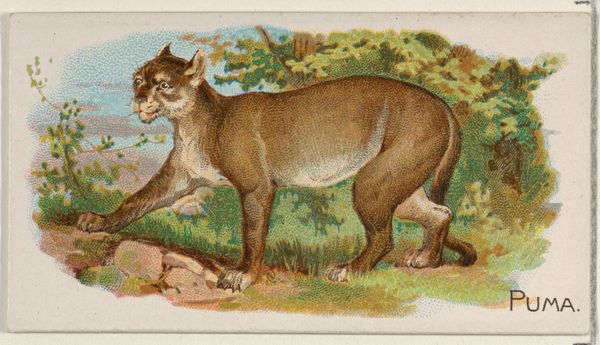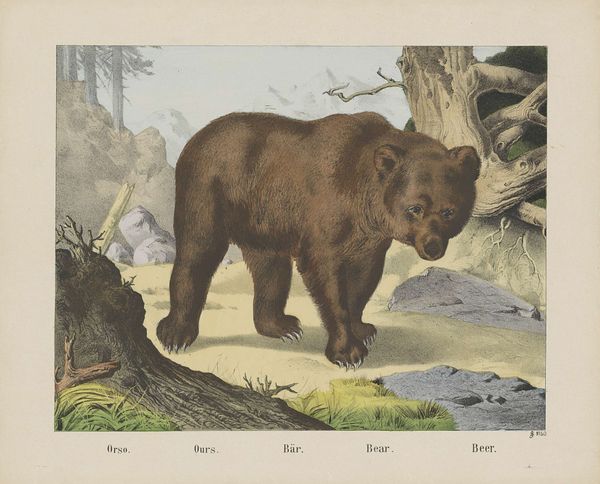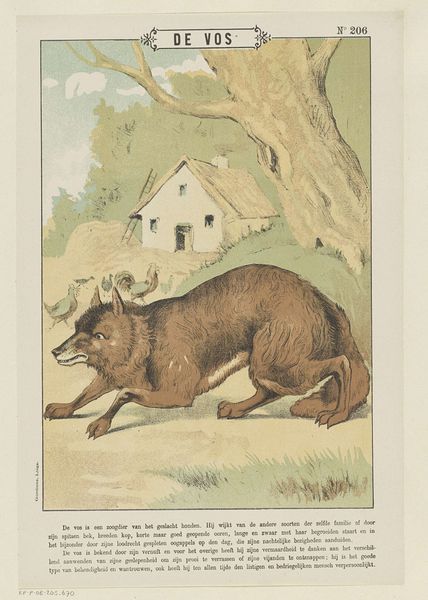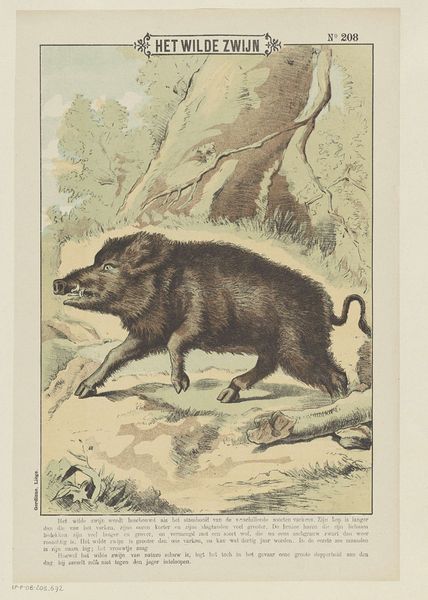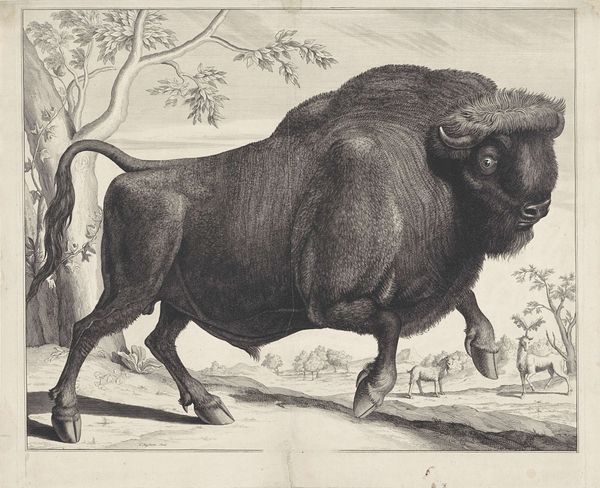
drawing, coloured-pencil, print
#
drawing
#
coloured-pencil
# print
#
landscape
#
caricature
#
coloured pencil
#
watercolour illustration
#
watercolor
#
realism
Dimensions: height 350 mm, width 432 mm
Copyright: Rijks Museum: Open Domain
Editor: So, this piece is a coloured-pencil drawing and print called "Tapir," dating from 1829 to 1880, by Firma Joseph Scholz. It’s… interesting. The adult tapir is so large and solid, whereas the baby tapir next to it has this almost whimsical, stripey pattern. What do you make of this juxtaposition? Curator: I see it as an expression of scientific visuality being shaped by colonial and public expectations. Prints like these played a crucial role in circulating images of the natural world. Think about who commissioned and consumed these images. Editor: Naturalists and academics? Curator: Perhaps. But also a broader public increasingly interested in the exotic and the expansion of knowledge due to colonialism. These images needed to be informative, of course, but also visually appealing. Consider how the artist frames the tapir, not just as an animal, but almost as a specimen, a symbol of the "new" world being unveiled. How do you think this print might shape public perceptions of tapirs and the regions they inhabit? Editor: I hadn't thought of it like that. I was so focused on the aesthetic qualities, the colour pencils blending into each other… so, it's not just about accurately depicting an animal, but about framing a narrative for a European audience? Curator: Exactly! The act of depicting and displaying is itself a political act. It reinforces particular ways of seeing and understanding the world, doesn't it? The "Tapir," thus, operates as both a scientific record and a piece of cultural propaganda, subtly reinforcing Europe's role as the center of knowledge. Editor: Wow. So, what initially seemed like a straightforward depiction of animals has layers of meaning about colonialism and the public perception of nature. I’ll never look at animal illustrations the same way again. Curator: Indeed. That’s why understanding the social life of art is as crucial as knowing art history itself.
Comments
No comments
Be the first to comment and join the conversation on the ultimate creative platform.

